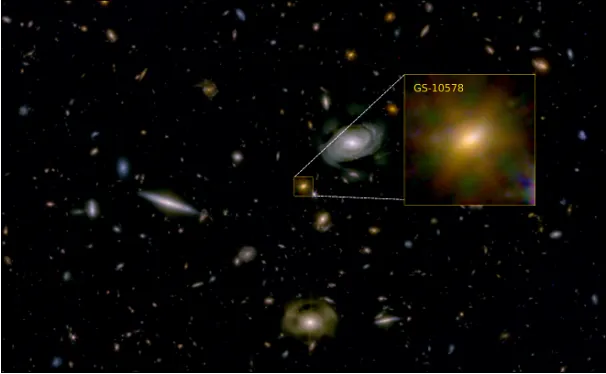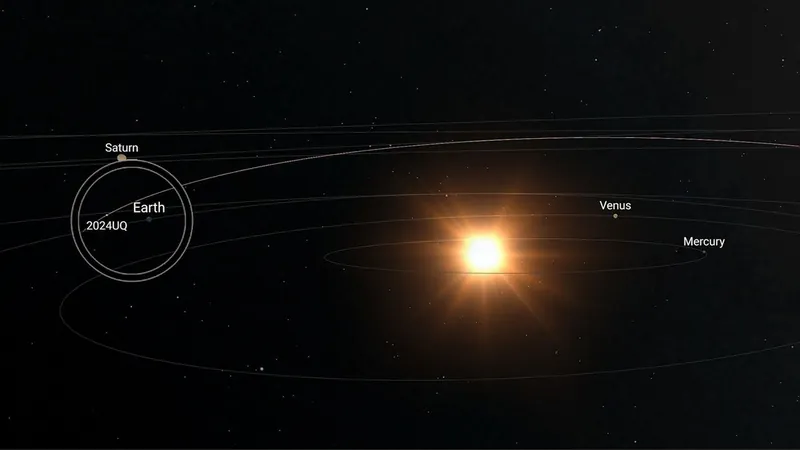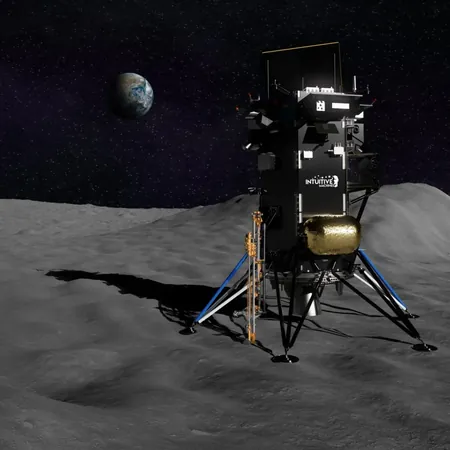
Astronomers Discover Black Hole Devouring its Host Galaxy: A Galactic Mystery Unraveled!
2024-11-15
Author: Li
In an unexpected twist of events, astronomer Francesco D’Eugenio and his team stumbled upon a cosmic enigma while attempting to analyze a distant galaxy's stars.
Instead of uncovering a thriving stellar nursery, they discovered a galaxy on the brink of death, starved by its own supermassive black hole.
Published in Nature Astronomy, their findings reveal that the galaxy, aptly nicknamed Pablo’s Galaxy, is suffering from a severe lack of the essential gas needed for new star formation. This outcome supports a long-hypothesized idea regarding how galaxies can meet their demise, a phenomenon that has often been debated among astrophysicists.
A Journey Back in Time
Using the advanced capabilities of the James Webb Space Telescope (JWST), D’Eugenio and a collaborative team of international researchers explored Pablo's Galaxy, a compact but massive system estimated to hold about 200 billion solar masses.
The astonishing capabilities of the JWST allowed the team to observe light from this galaxy as it existed approximately 11.7 billion years ago when the universe was merely 2 billion years old.
D’Eugenio remarked, “This light is older than both the Sun and Earth,” emphasizing the ancient nature of the observations.
At the heart of Pablo’s Galaxy resides its supermassive black hole. When active, black holes can expel tremendous amounts of energy and matter, significantly impacting their surrounding environment.
In this case, the research team discovered that the black hole was expelling cold, dark gas at astonishing speeds of up to 620 miles (1,000 kilometers) per second.
This ejection process forces gas out of the galaxy's gravitational pull, hindering the formation of new stars.
D’Eugenio noted, “While we knew about the black hole, we didn’t anticipate its profound effects on a galaxy of this size.”
The JWST Advantage
Thanks to the superior sensitivity and resolution of JWST in detecting near- and mid-infrared wavelengths, the researchers caught a glimpse of a previously undetected feature: the dense, cold gas that the black hole was ejecting.
This gas is particularly elusive, as it does not emit visible light and was hidden from previous instruments.
By identifying how this gas obstructs the galaxy's light, the researchers gleaned vital information about the black hole's influence on star formation—a crucial step in understanding the lifecycle of galaxies throughout the universe.
Is it Game Over for Pablo’s Galaxy?
Despite the dire circumstances caused by its black hole, Pablo’s Galaxy may not be permanently doomed.
Astrophysics Ph.D. student Olivia Cooper, who was not involved in the research, explained that “quenched” galaxies aren’t necessarily finished.
Under favorable conditions, they might regain access to the gas needed to reignite their star formation engines.
Interestingly, despite the quenching of star formation, Pablo's Galaxy retains a surprisingly stable feature: a well-organized rotating stellar disk akin to our very own Milky Way.
This challenges the common assumption that once galaxies are quenched, they devolve into chaotic structures.
In the nearby universe, such quenched galaxies often lose their orderly formation but not Pablo’s Galaxy, which showcases a stable disk where stars spiral together around the galaxy’s center.
This finding has shocked researchers.
Minjung Park, a Ph.D. student at the Harvard Smithsonian Center for Astrophysics, commented, “It’s unexpected! It suggests the mechanisms that halt star formation don’t necessarily disrupt the stellar disk.”
What Lies Ahead?
The researchers speculate that since quenching is not commonly observed in the nearby universe, significant changes must have occurred over the past 11 billion years.
To deepen our understanding of galaxy evolution, D’Eugenio and his team intend to conduct further studies on recently quenched galaxies.
This will offer insights into fresher signs of gas expulsion and examine lower-mass galaxies to pinpoint when and why they cease star formation.
“Right now, our observations focus primarily on the most massive galaxies. It could be that they host the largest black holes, but we’ve mainly been observing the brightest objects,” D’Eugenio concluded, urging the need to explore less massive systems to understand the beginnings of this cosmic phenomenon.
Stay tuned as astronomers dig deeper into the secrets of Pablo’s Galaxy and uncover the intriguing narratives of the universe’s colossal structures!



 Brasil (PT)
Brasil (PT)
 Canada (EN)
Canada (EN)
 Chile (ES)
Chile (ES)
 España (ES)
España (ES)
 France (FR)
France (FR)
 Hong Kong (EN)
Hong Kong (EN)
 Italia (IT)
Italia (IT)
 日本 (JA)
日本 (JA)
 Magyarország (HU)
Magyarország (HU)
 Norge (NO)
Norge (NO)
 Polska (PL)
Polska (PL)
 Schweiz (DE)
Schweiz (DE)
 Singapore (EN)
Singapore (EN)
 Sverige (SV)
Sverige (SV)
 Suomi (FI)
Suomi (FI)
 Türkiye (TR)
Türkiye (TR)